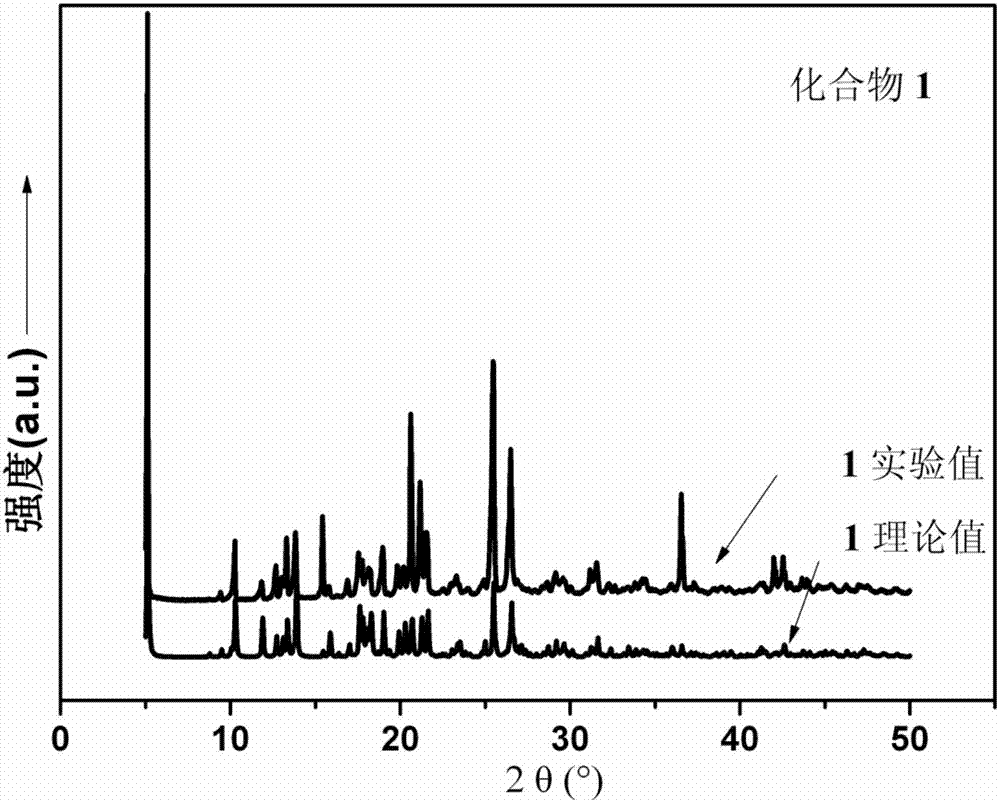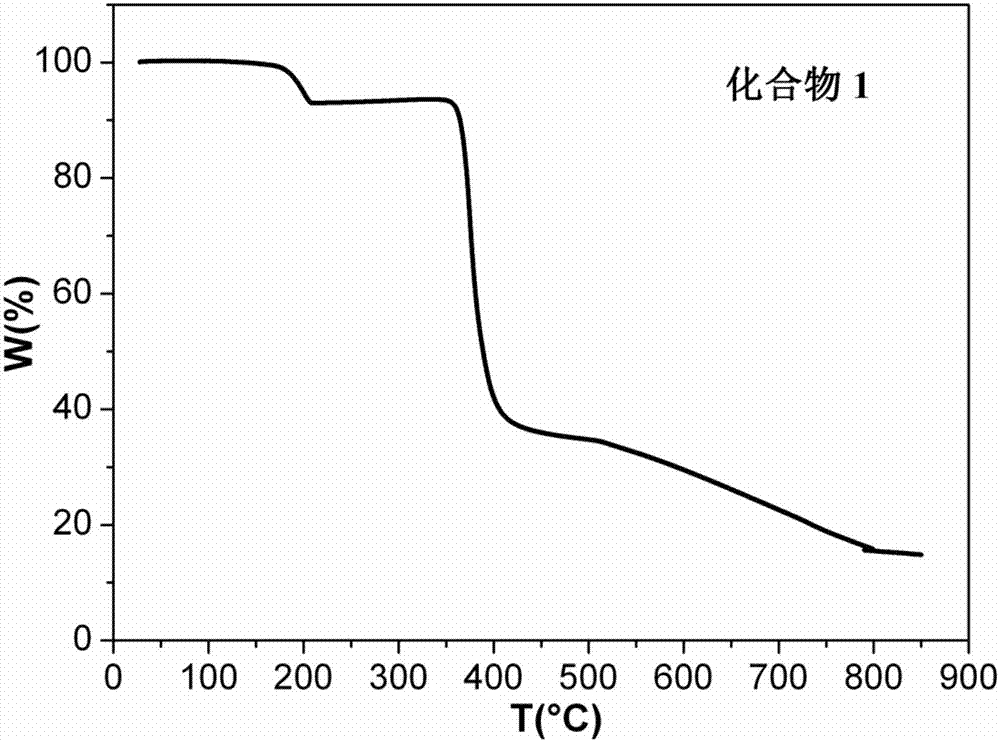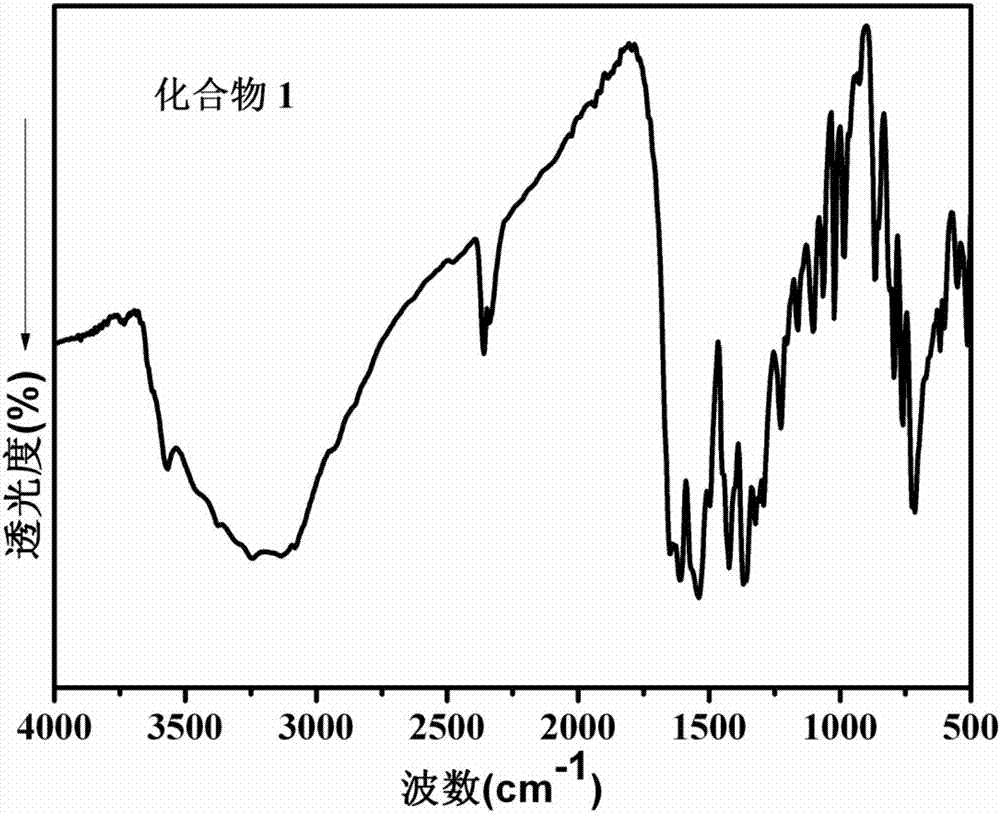Nickel-based magnetic compound material as well as synthesis method and application thereof
A synthesis method and compound technology, applied in chemical instruments and methods, special compound water treatment, water pollutants, etc., can solve problems such as practical application obstacles, and achieve rapid and convenient reuse, fast catalytic speed, and convenient recovery. The effect of reuse
- Summary
- Abstract
- Description
- Claims
- Application Information
AI Technical Summary
Problems solved by technology
Method used
Image
Examples
Embodiment 1
[0043] (1) Synthesis of [Ni 3 (4-bmbpd) 3 (BTC) 2 (H 2 O) 4 ]·4H 2 O, where 4-bmbpd is N,N'-bis(4-methylenepyridine)benzene-1,4-dicarboxamide, the structural formula is: BTC as trimesate
[0044] 0.1mmol NiCl 2 ·6H 2 O, 0.10 mmol N,N'-bis(4-methylenepyridine)benzene-1,4-dicarboxamide, 0.1 mmol trimesic acid, and 5 mL H 2 O was sequentially added into a 25mL beaker, and ultrasonicated at room temperature for 5min to obtain a suspension mixture. After the pH of the suspension mixture was adjusted to 4.2 with 0.1mol / L NaOH solution, it was transferred to a 25mL autoclave and heated at 10°C / h. The heating rate was increased to 105°C, and the temperature was kept for 48 hours under hydrothermal conditions, and the temperature was lowered to room temperature at a cooling rate of 2.5°C / h to obtain green blocky crystals, which were washed alternately with deionized water and ethanol for 3 times, and dried naturally at room temperature , get [Ni 3 (4-bmbpd) 3 (BTC) 2 (H 2...
Embodiment 2
[0048] (1) Synthesis of [Ni 3 (4-bmbpd) 3 (BTC) 2 (H 2 O) 4 ]·4H 2 O, where 4-bmbpd is N,N'-bis(4-methylenepyridine)benzene-1,4-dicarboxamide and BTC is trimesate
[0049] 0.2mmol NiCl 2 ·6H 2 O, 0.10 mmol N,N'-bis(4-methylenepyridine)benzene-1,4-dicarboxamide, 0.15 mmol trimesic acid and 12 mL H 2 O was sequentially added into a 25mL beaker, and ultrasonicated at room temperature for 8min to obtain a suspension mixture. After the pH of the suspension mixture was adjusted to 6.4 with 0.1mol / L NaOH solution, it was transferred to a 25mL autoclave, and the mixture was heated at 10°C / h The heating rate was increased to 125°C, and the temperature was kept for 96 hours under hydrothermal conditions, and the temperature was lowered to room temperature at a cooling rate of 2.5°C / h to obtain green blocky crystals, which were washed alternately with deionized water and ethanol for 4 times, and dried naturally at room temperature , get [Ni 3 (4-bmbpd) 3 (BTC) 2 (H 2 O) 4 ]·...
Embodiment 3
[0053] (1) Synthesis of [Ni 3 (4-bmbpd) 3 (BTC) 2 (H 2 O) 4 ]·4H 2 O, where 4-bmbpd is N,N'-bis(4-methylenepyridine)benzene-1,4-dicarboxamide and BTC is trimesate
[0054] 0.3mmol NiCl 2 ·6H 2 O, 0.10 mmol N,N'-bis(4-methylenepyridine)benzene-1,4-dicarboxamide, 0.2 mmol trimesic acid and 15 mL H 2 O was sequentially added into a 25mL beaker, and ultrasonicated at room temperature for 12min to obtain a suspension mixture. After the pH of the suspension mixture was adjusted to 7.2 with 0.1mol / L NaOH solution, it was transferred to a 25mL autoclave and heated at 10°C / h. The heating rate was increased to 145°C, and the temperature was kept for 120 hours under hydrothermal conditions, and the temperature was lowered to room temperature at a cooling rate of 2.5°C / h to obtain green blocky crystals, which were washed alternately with deionized water and ethanol for 5 times, and dried naturally at room temperature , get [Ni 3 (4-bmbpd) 3 (BTC) 2 (H 2 O) 4 ]·4H 2 O, the pr...
PUM
| Property | Measurement | Unit |
|---|---|---|
| decomposition efficiency | aaaaa | aaaaa |
Abstract
Description
Claims
Application Information
 Login to View More
Login to View More - R&D
- Intellectual Property
- Life Sciences
- Materials
- Tech Scout
- Unparalleled Data Quality
- Higher Quality Content
- 60% Fewer Hallucinations
Browse by: Latest US Patents, China's latest patents, Technical Efficacy Thesaurus, Application Domain, Technology Topic, Popular Technical Reports.
© 2025 PatSnap. All rights reserved.Legal|Privacy policy|Modern Slavery Act Transparency Statement|Sitemap|About US| Contact US: help@patsnap.com



